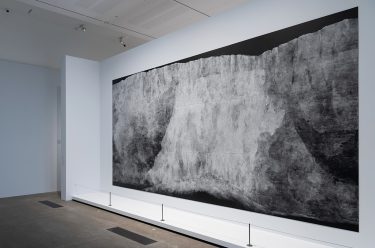Gabriella Coslovich met Australian artist Patricia Piccinini, and several of her new creations, at her Melbourne studio. Piccinini is know for her complex offspring comprising sculpture, photography, video, drawing and large-scale installations.
Under a crisp blanket of brown wrapping paper lies a red-haired, ape-like creature, cradling a seemingly human baby to her chest (Illustrated). I look into the creature’s warm, hazel eyes and see a mix of resignation, benevolence and sadness. ‘This is a blended family’, explains the creature’s creator, Patricia Piccinini, in her soft, light voice. ‘She is a transgenic creature . . . She’s part human, part orangutan, and her baby is more human but a little orangutan’, she says, as if it’s the most natural thing in the world.
‘Isn’t she beautiful?’, coos Roger Moll, Piccinini’s studio manager, as the three of us peer under the crinkly paper at this mysterious, maternal figure. ‘You don’t think “beautiful” is the right word?’, he prods when I struggle to answer. She is, I suppose, beautiful, in the weird, disturbing way that we have come to expect from Piccinini’s work. There is beauty in the creature’s humanity, in her kind and sage expression — and in Piccinini’s visible affection for this life-like fusion of human and ape. What is the creature’s story? Is she man-made? Created purely for her use to human beings? A surrogate? Why else the sadness in her eyes? Instinctively, one seeks a narrative for this strange, soulful beast, who reminds us, uncannily, of our own animal nature.
RELATED: Delve into the world of Patricia Piccinini
SIGN UP NOW: Be the first to know. Subscribe to QAGOMA Blog for the latest announcements, acquisitions, and behind-the-scenes features.


From the moment Piccinini burst onto the contemporary art scene with works such as 1997’s ‘Protein lattice’ series (unforgettable images of physically perfect women posing with hairless mice sporting ears growing out of their backs), she has probed humanity’s desire to control and manipulate the natural world. For 20 years, her creations have straddled science fact and fiction, born of the artist’s rich imagination and her desire to question — but not judge — developments in biotechnology, genetic engineering and other fields. Many of her works are instantly recognisable, seared into the public’s imagination, such as The Young Family 2002 (Illustrated), her famed depiction of a placid, curled up creature with long floppy ears, pups suckling at her teats; or The Carrier 2013 (Illustrated), of a fragile elderly woman being carried by a mellow-looking man-beast, hairy of body and balding of head.

‘Curious Affection‘ featured major new commissions alongside significant works from the past 15 years, and has inspired new scholarship in an exhibition publication of the same name. When we spoke, some months out from the opening, Piccinini and her small team of technicians — 3-D modellers, sculptors, mould makers, skin casters and hair punchers — were busy putting the final touches to new work, indeed, to what will become entire new worlds. ‘It’s a family reunion’, Piccinini says, as she introduces me to the new family members taking shape in her vast, rambling studio, a former clothing factory in a narrow backstreet in the inner-city Melbourne suburb of Collingwood.
Piccinini’s studio is a wonderland of weirdness: I have seen a muscular human torso with a fan of elbows emerging from its side; reference photos of skin texture, colour and discolouration; silicone moulds for the faces of two transgenic lovers, perhaps part human, part chimp; and a very short, impish chap called ‘the pollinator’, with eyes as large and round as a kewpie doll’s and a luxuriant cape of red hair cascading from his body. ‘It’s real hair and it’s punched in one at a time,’ Piccinini says, admiring the pollinator’s long, bodily locks.
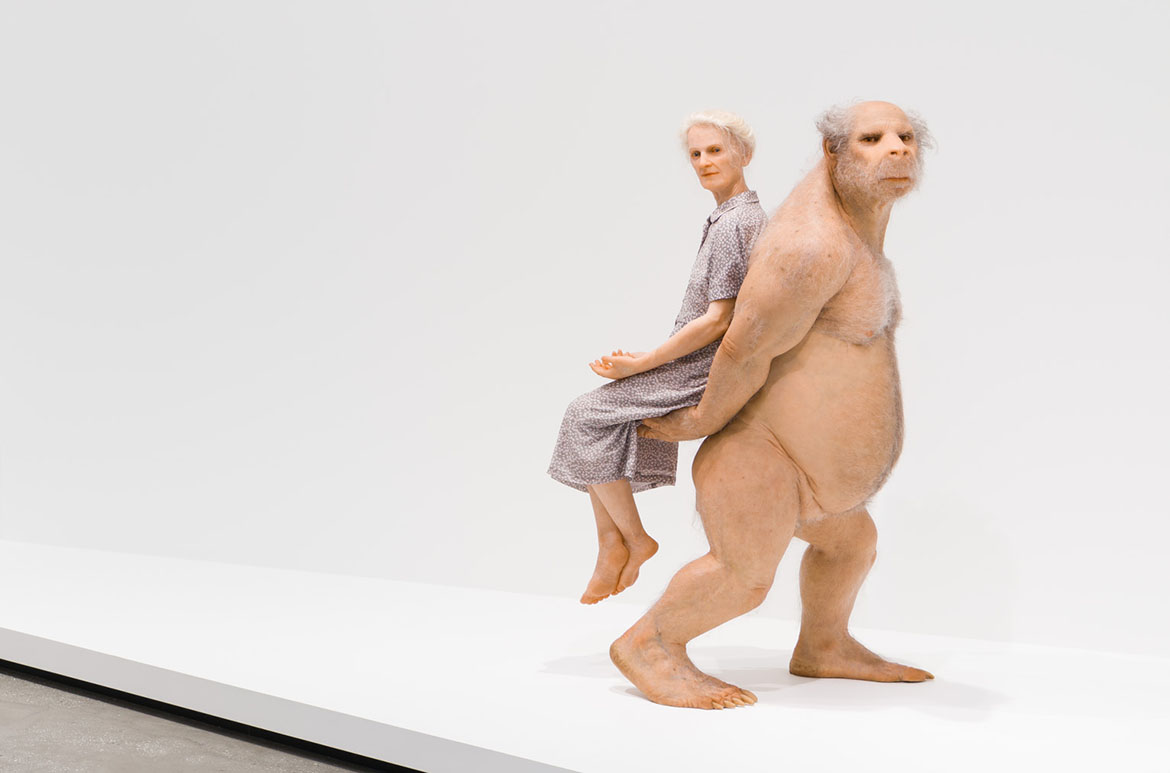
The pollinator’s arms are raised, and his hands are long and thin, ready to pollinate — they will eventually hook into a surreal sculpture of disembodied, ballerina-lithe legs in an almost arabesque pose. At the time of writing, the legs were lurking in the front office of Piccinini’s warehouse studio, waiting to be joined to the impish creature. ‘Nature has the most extraordinary ways of reproducing itself, and a lot of it is cooperative’, Piccinini says. ‘I’m interested in how we all co-exist and are connected, especially through this process of reproduction and how awe-inspiring it is and how we live amongst it.’
Like much of Piccinini’s work, the pollinator was inspired by the natural world, and yet it goes beyond the natural, prompting us to consider new possibilities and to ask: what responsibility must we take for our creations? Piccinini sees her works as catalysts for discussion — she does not take sides, nor does she tell people what to think: ‘I expect people to look at them and then in their own lives respond, whether it be how they raise their children, or how they act at work, whatever it is, and that’s what builds culture’. She leads me up steep wooden stairs to a small mezzanine where one of her technicians, Liz Rule, is meticulously inserting hair, one strand at a time, into the head of one of the transgenic lovers whose casts I saw downstairs.
‘You can’t make a work like this without care and thought’, Piccinini says, admiring Rule’s handiwork. ‘Look at these softies’, she says, pointing out the short, fluffy hairs that appear around the creature’s hairline, just as they do along the hairline of humans. ‘Well,’ Rule explains, ‘I was looking at your softies yesterday and I was thinking I must put some in’. Rule has worked for Piccinini for eight years, and the two have become solid friends. At her feet, a little wire-haired dog sleeps peacefully, oblivious to the round-faced, pig-featured, teenage boy with fine golden hair lying on the floor nearby. His back has an armadillolike covering that mimics the patterns of a sandshoe’s sole. ‘He’s so cute and lovely with his beautiful golden hair . . . He’s a wonder of nature’, Piccinini says tenderly. Once again, I’m caught with a quizzical look on my face. ‘What are you thinking?’, Rule asks. I confess that I’m finding it hard to be charmed by the teenage boy–pig. ‘You may be repulsed by this, but you won’t be repulsed by what Patricia’s trying to say’, Rule suggests.
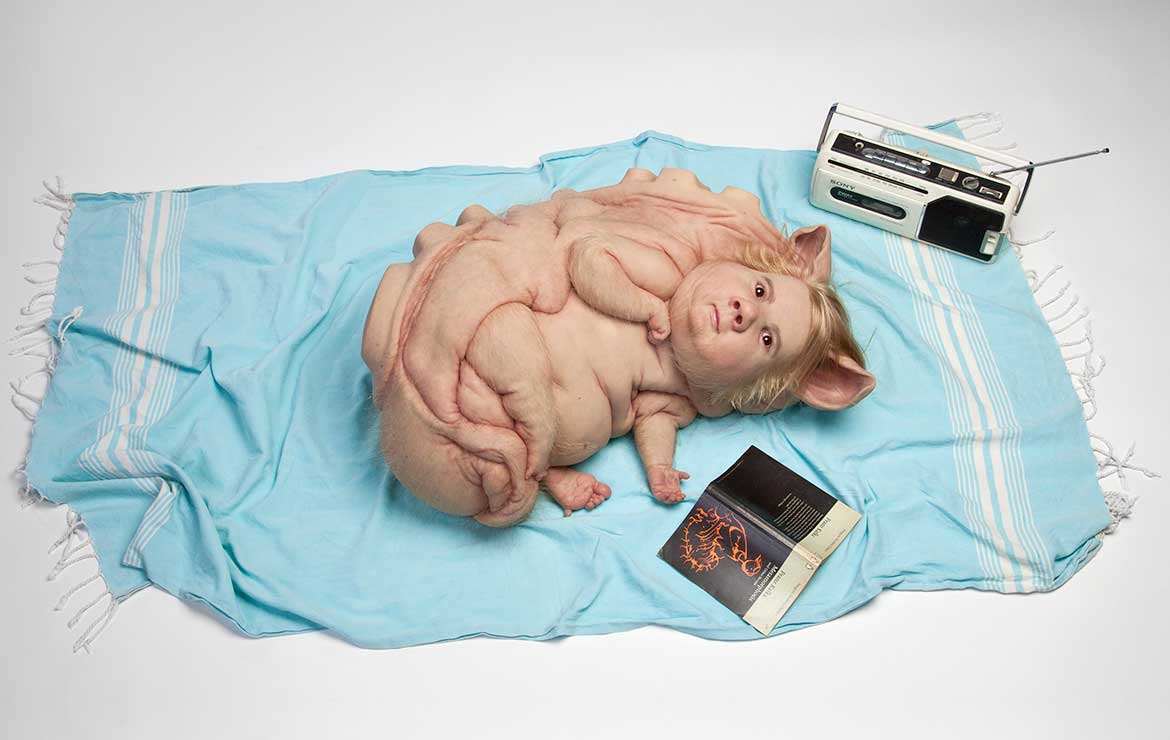
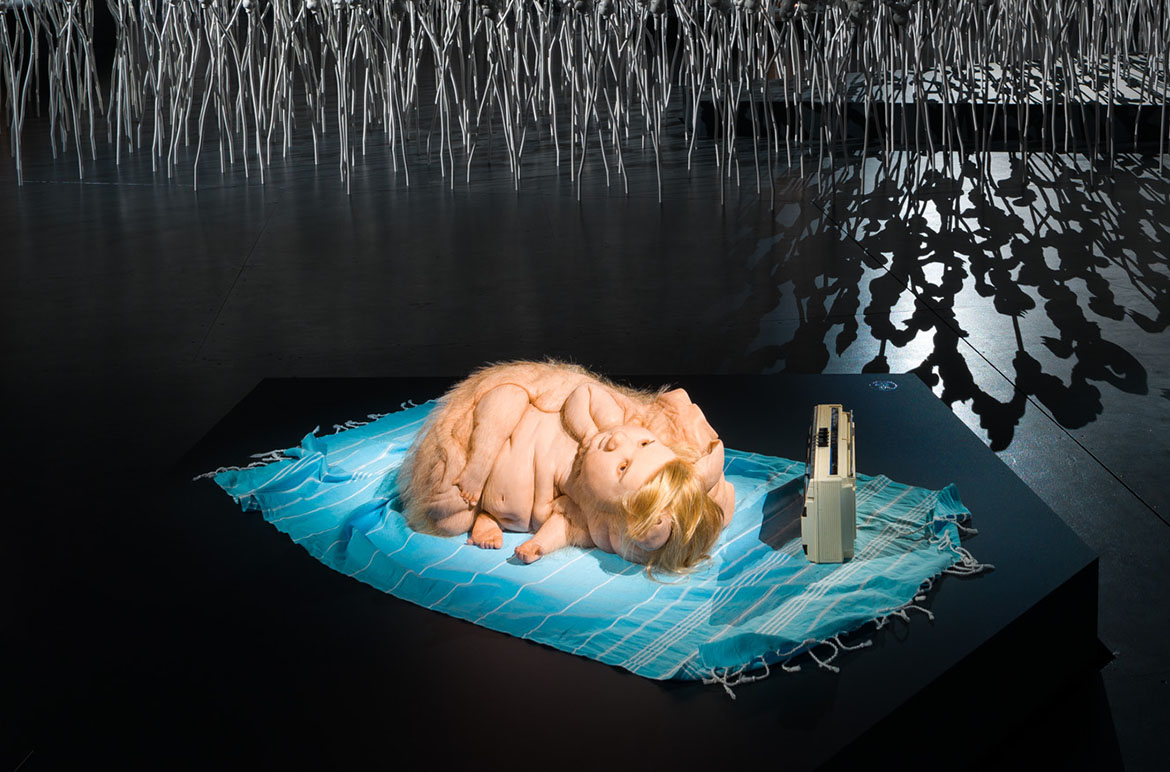
This bizarre amalgam of organic and inorganic body parts, titled Teenage Metamorphosis (Illustrated), is not so far from reality. A team of US scientists recently developed the first human–pig hybrids in a move that could eventually lead to these hybrid creatures being used to farm organs for humans. As ever, Piccinini’s work has its eye on contemporary developments and explores the implications of such breakthroughs. Her answers are never straightforward. Piccinini’s work has the capacity to elicit radically different emotions: delight, compassion, intrigue, and, yes, repulsion. While it’s often discussed in relation to advances in science and technology, perhaps less noted is her work’s ability to engender empathy and acceptance of difference. What exactly is ‘normal’ and who decides? Why do I fear what I fear? These are the questions that are continually raised by her work, and they’re questions of great relevance today. ‘How we relate to difference is a pivotal theme in my work’, Piccinini says.
It’s a huge thing. You’re pulled in because you’re intrigued and you see the warmth and connection between these characters, but at the same time you’re pushed away because they’re unfamiliar and unknown, it’s not right, it’s not natural. This dynamic opens up a space for you to be really present and say, “Well, what do I actually think here, and what do I actually feel?”
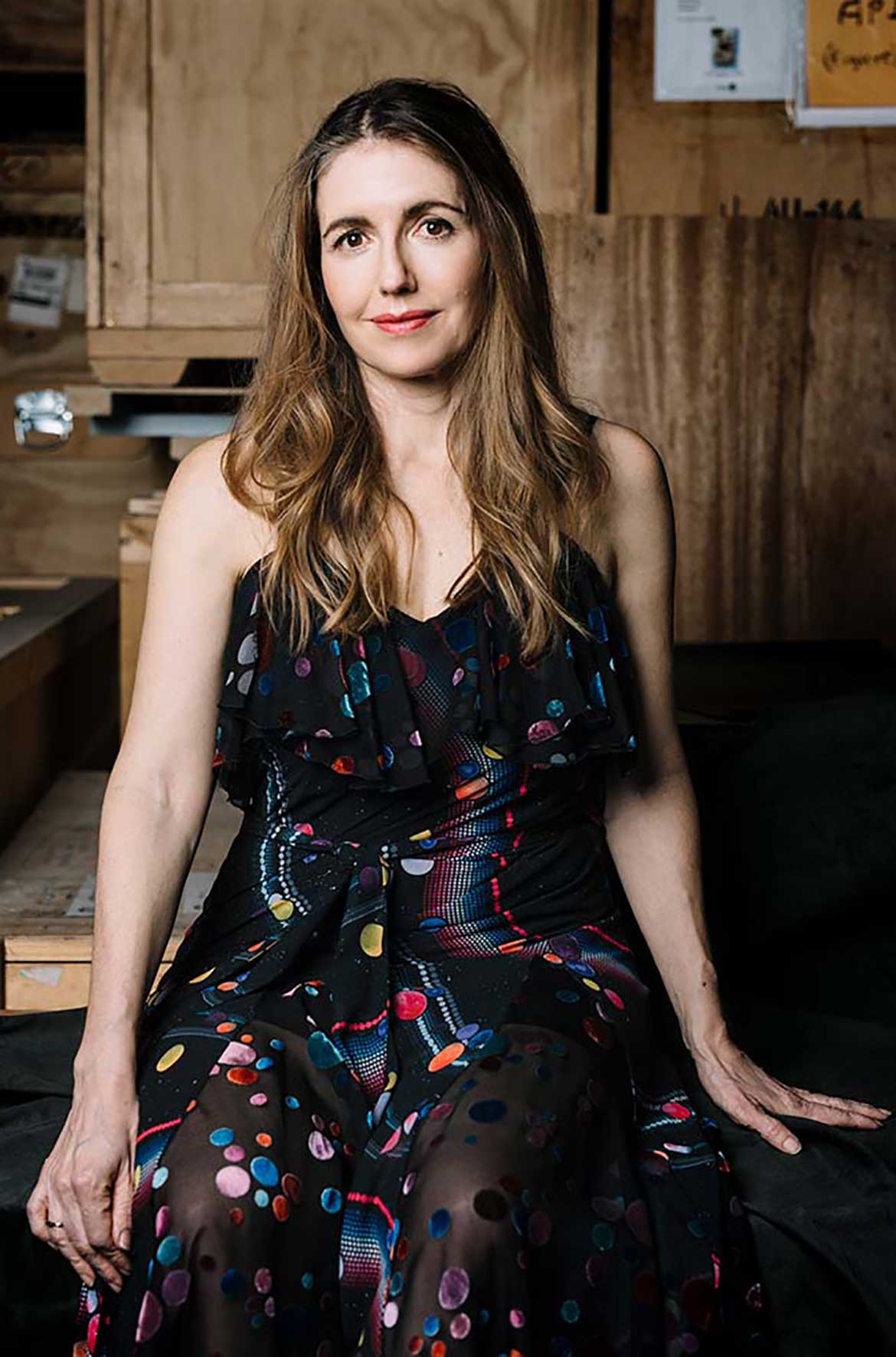
At 52, Piccinini has a childlike curiosity and dreaminess. She speaks with quiet conviction about her work and is not interested in the ironic posturing of postmodernism; she doesn’t want to alienate those who aren’t in on the joke. Her work, she says, is ‘warm’, ‘a beautifully crafted love letter’ inviting people into her ‘dream landscape’.
At GOMA, that landscape included a field of 3000 transgenic flowers, each a metre high, that appear to be cultivating human organs; a grotto filled with 700 porcelain ‘mushroom bats’, and an abstract inflatable work (Illustrated) that rose up over three floors of GOMA. The inflatable follows on from Piccinini’s controversial Skywhale (Illustrated), a huge hot-air balloon of a whale with many pendulous breasts, commissioned for the Centenary of Canberra in 2013.

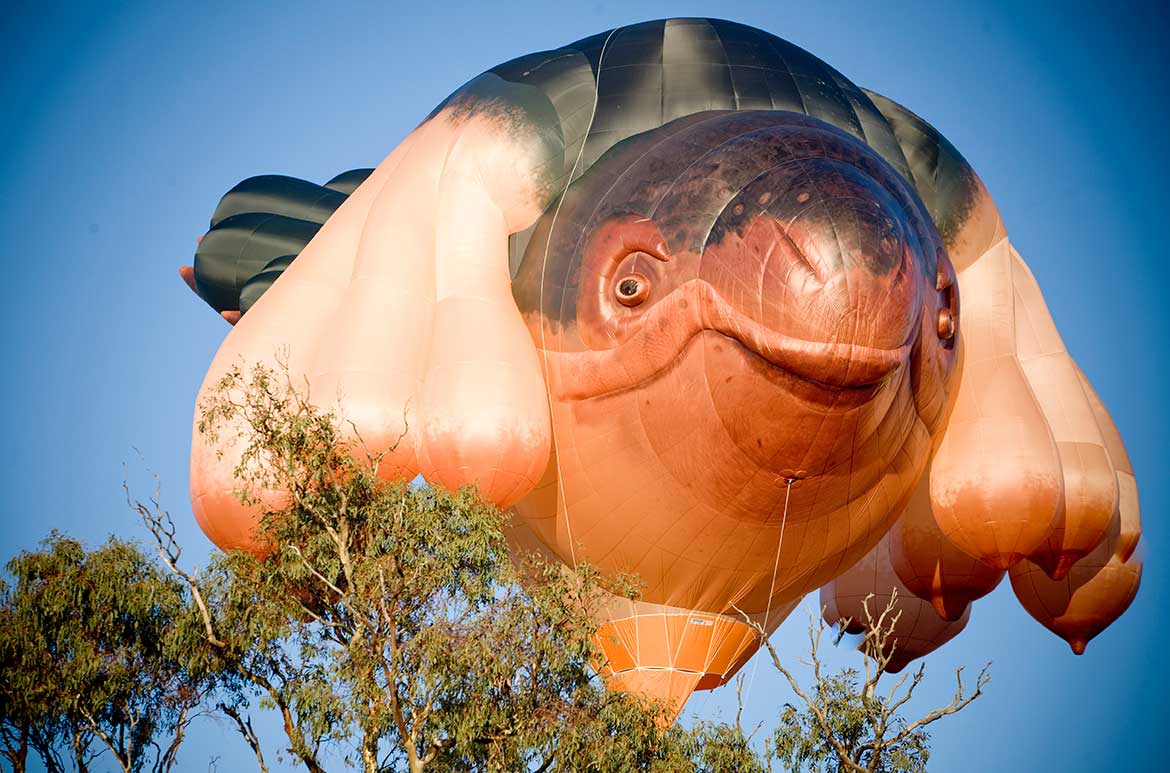
For Peter McKay, GOMA’s Curator of Contemporary Australian Art, Piccinini is a weaver of contemporary fables, a storyteller whose works may potentially offer lessons to those prepared to spend time with them. ‘They’re enchanting, too,’ he says. ‘They make us realise what it is to be alive. It’s not every artist that can do that, or even thinks about that kind of thing.’ From the outside, it may seem as though Patricia Piccinini has never been far from the artistic limelight — she represented Australia at the 50th Venice Biennale in 2003, and her work has been exhibited in museums around the world. But the reality is not so simple. As she has said:
It is a life where there is not a lot of security, and that’s why I try and make the most of every opportunity. But at the same time it has been a life where I get to be one of the meaning makers. I’m part of the meaning-making process in this culture. We can’t just get all our meaning from politics or from science. It’s a great privilege and I don’t take it for granted.
Gabriella Coslovich is a Melbourne author and freelance writer specialising in the arts. Her debut book, Whiteley on Trial, about Australia’s most extraordinary case of alleged art fraud, was published by Melbourne University Press in October.
Extract from ‘A wonderland of weirdness’ by Gabriella Coslovich published in the Gallery’s Artlines magazine, issue 1, 2018
Exhibition publication
This exhibition catalogue explores the artist’s exciting new commissions, as well as significant works produced over the last 20 years. New scholarship by Dr Elizabeth Finkel (Cosmos Magazine) and Professor Rosi Braidotti, a pioneer in European women’s studies, together with a curatorial overview by Peter McKay, Exhibition Curator, QAGOMA, explores the artist’s groundbreaking artworks and ideas. The volume also features ‘Familiar’, a short story by award-winning author China Miéville. This informative 200pp publication is filled with stunning installation photography of the artist’s GOMA exhibition. Patricia Piccinini: Curious Affection and a special Slipcase Limited Edition is available in-store and online.
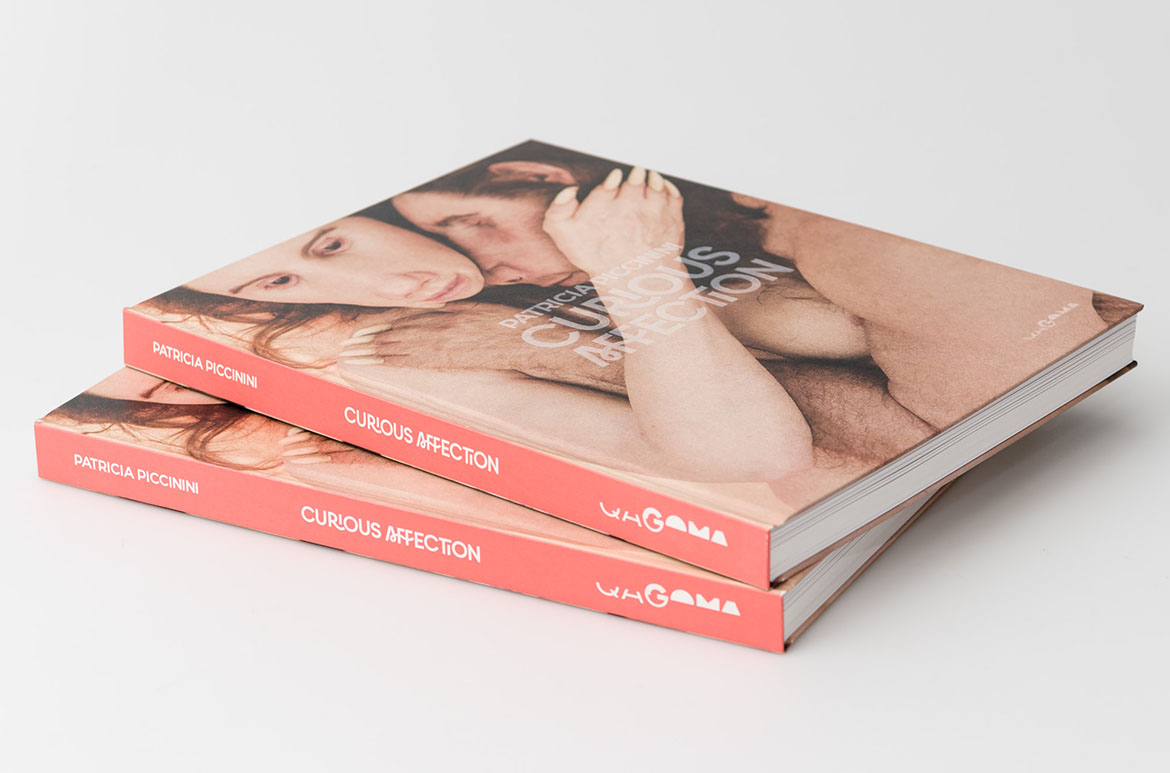
Know Brisbane through the Collection / Read more about Australian art / Subscribe to QAGOMA YouTube to go behind-the-scenes
‘Patricia Piccinini: Curious Affection‘ was exclusive to Brisbane’s Gallery of Modern Art (GOMA) from 24 March – 5 August 2018.
Featured image detail: Patricia Piccinini Kindred 2018
#PatriciaPiccinini #QAGOMA
1-2018


